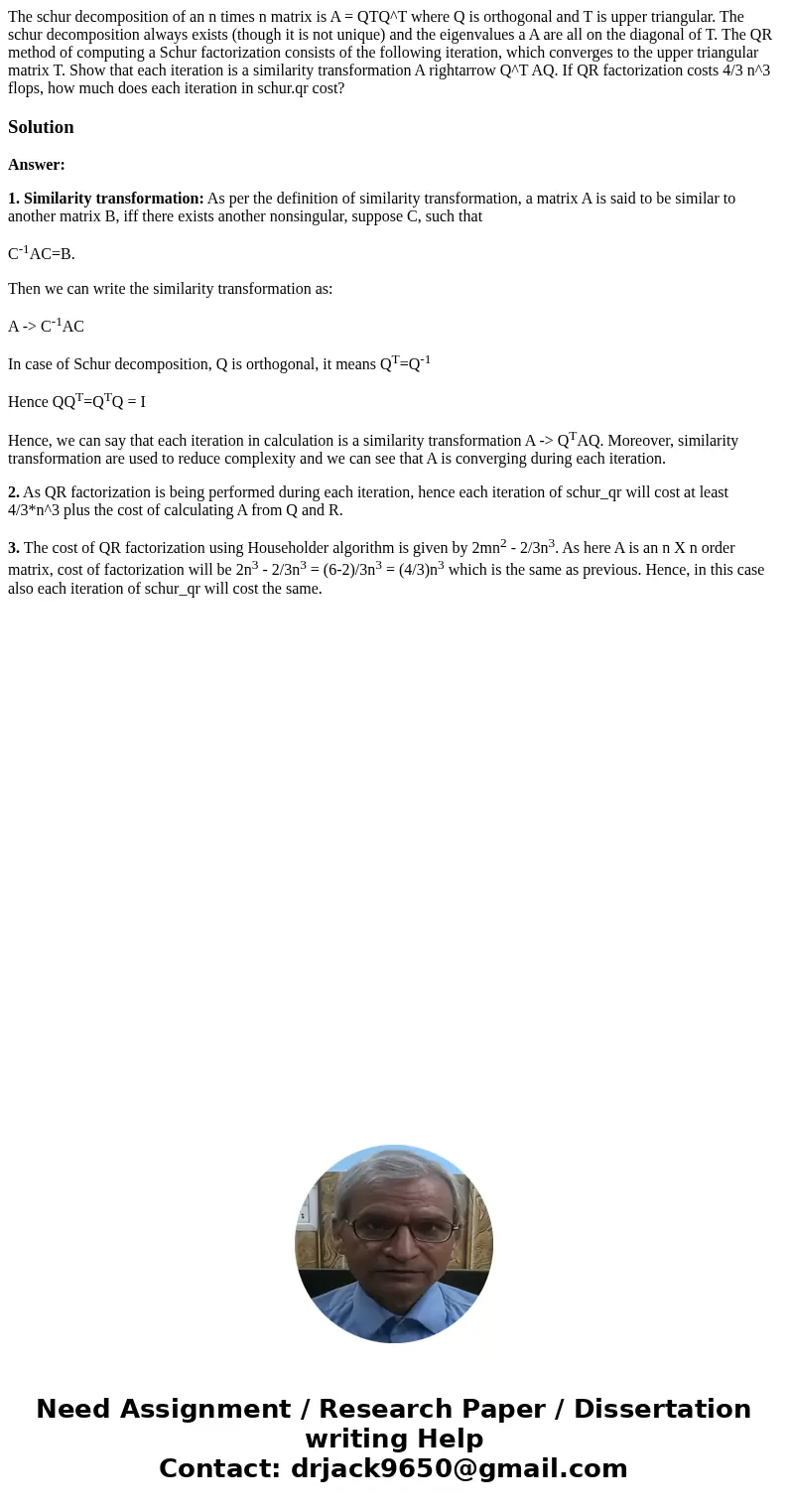The schur decomposition of an n times n matrix is A QTQT wh
Solution
Answer:
1. Similarity transformation: As per the definition of similarity transformation, a matrix A is said to be similar to another matrix B, iff there exists another nonsingular, suppose C, such that
C-1AC=B.
Then we can write the similarity transformation as:
A -> C-1AC
In case of Schur decomposition, Q is orthogonal, it means QT=Q-1
Hence QQT=QTQ = I
Hence, we can say that each iteration in calculation is a similarity transformation A -> QTAQ. Moreover, similarity transformation are used to reduce complexity and we can see that A is converging during each iteration.
2. As QR factorization is being performed during each iteration, hence each iteration of schur_qr will cost at least 4/3*n^3 plus the cost of calculating A from Q and R.
3. The cost of QR factorization using Householder algorithm is given by 2mn2 - 2/3n3. As here A is an n X n order matrix, cost of factorization will be 2n3 - 2/3n3 = (6-2)/3n3 = (4/3)n3 which is the same as previous. Hence, in this case also each iteration of schur_qr will cost the same.

 Homework Sourse
Homework Sourse